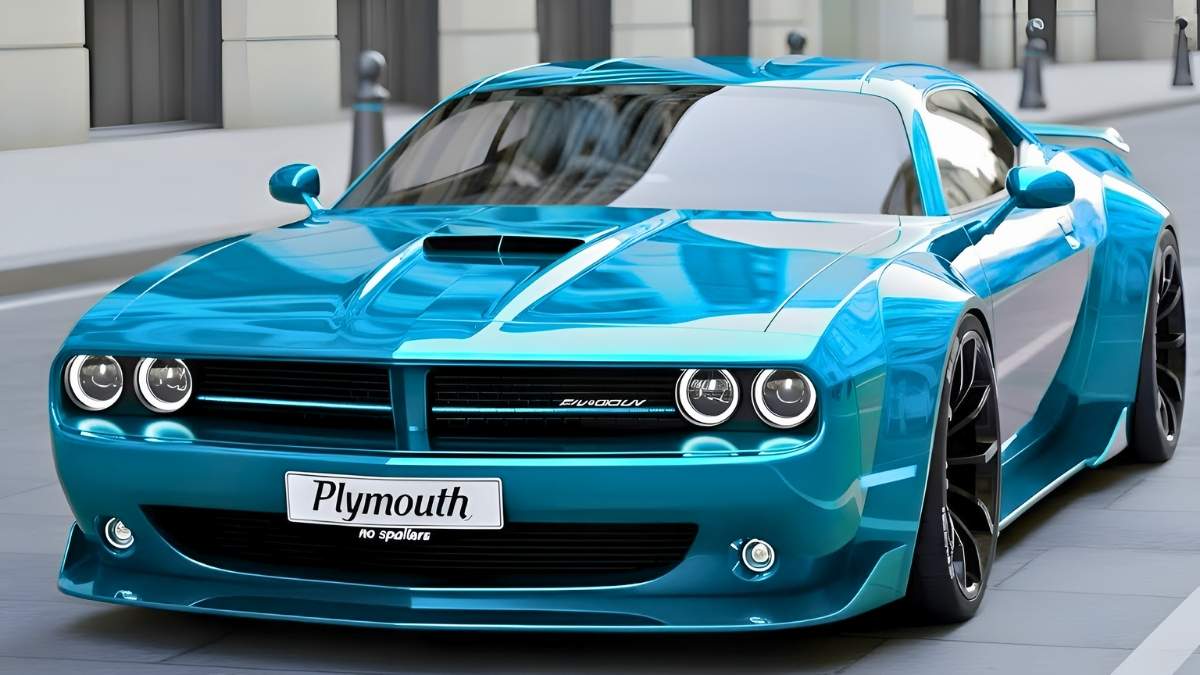The Plymouth Roadrunner was first introduced in 1968 by Chrysler’s Plymouth division as a stripped-down, high-performance car built for speed and fun. It was designed to capture the true essence of muscle power, simplicity, and affordability.
Back then, most high-performance cars were getting more expensive, but the Roadrunner broke that trend. For a few thousand dollars, you could own a car that hit 0–60 mph in under 6 seconds, thanks to its mighty 426 Hemi V8 engine. It became a street legend almost overnight.
Even today, collectors love the Roadrunner for its authenticity. No luxury fluff just a pure muscle experience that’s impossible to replicate.
How the Plymouth Roadrunner Evolved Explained Simply
The Roadrunner’s production ran from 1968 to 1980, but its golden years were the late ’60s and early ’70s. Over the years, it evolved in design, performance, and attitude.
| Model Year | Engine Options | Horsepower Range | Notable Feature |
|---|---|---|---|
| 1968 | 383 & 426 Hemi | 335–425 HP | Simple, no-frills design |
| 1970 | 440 Six-Pack | 390 HP | Iconic Air Grabber hood |
| 1972 | 400 & 440 | 255–370 HP | Updated grille and body style |
| 1975–1980 | Smaller engines | 150–180 HP | Shift toward economy models |
By the mid-1970s, emissions laws and rising fuel prices forced automakers to tone down performance. But despite this, the Roadrunner’s legend continued through car shows, movies, and drag races.
In 2025, rumors and concept teasers suggest that the Roadrunner might make a modern comeback possibly as an electric muscle car that honors its roots while embracing new technology.
Why the Plymouth Roadrunner Still Turns Heads in 2025
So, what makes the Plymouth Roadrunner such a timeless favorite? It’s the perfect blend of nostalgia and brute power.
The car’s classic look with bold stripes, hood scoops, and that “Beep-Beep” cartoon logo captures an era when cars had personality. Add the unmistakable rumble of its Hemi engine, and it’s no wonder it remains one of the most collectible muscle cars ever made.
In 2025, restored Roadrunners are fetching impressive prices. A fully restored 1970 model can easily sell for $90,000–$120,000, depending on condition and originality. Collectors value them not just as cars, but as cultural icons.
Common Mistakes When Buying or Restoring a Roadrunner and How to Avoid Them
Many enthusiasts dream of owning a Roadrunner, but there are some pitfalls to watch for.
- Skipping VIN verification – Always check if the car’s identification numbers match factory records.
- Ignoring rust and frame issues – These can turn a fun project into a money pit.
- Over-customizing – Purists prefer originality; modifications may reduce resale value.
- Not budgeting for maintenance – Classic muscle cars demand regular attention and quality parts.
When buying or restoring, work with a certified appraiser or classic car expert to ensure authenticity and avoid surprises.
Best Reasons to Love the Plymouth Roadrunner in 2025
- Pure driving thrill – No traction control, no digital filters just mechanical honesty.
- Timeless design – The 1970 body lines are still considered some of the best in muscle car history.
- Cultural legacy – Featured in countless car shows, movies, and drag racing events.
- Collector’s value – Prices have steadily increased over the past decade.
- Future potential – With Dodge and Chrysler exploring EV revivals, the Roadrunner could return stronger than ever.
Owning a Roadrunner isn’t just about speed it’s about owning a piece of American history.
The Latest Updates and Future of the Plymouth Roadrunner 2025
While Plymouth as a brand no longer exists, whispers around the automotive industry hint that Stellantis (the parent company of Dodge and Chrysler) may resurrect the Roadrunner name under Dodge’s performance division.
Concept designers and insiders have speculated about a “Roadrunner EV Concept”, blending retro styling with modern electric performance, possibly delivering 700+ horsepower through electric motors. If that becomes reality, 2025 could mark the rebirth of one of the most iconic muscle cars ever built this time built for the electric age.
Conclusion
The Plymouth Roadrunner isn’t just a car it’s a symbol of power, freedom, and simplicity that shaped American car culture. Even in 2025, decades after it left production, it continues to inspire car lovers and influence design trends. Whether you’re restoring a classic or waiting for a modern revival, the Roadrunner’s roar still echoes through time and that’s what makes it legendary.
FAQs About Plymouth Roadrunner 2025
1. When was the original Plymouth Roadrunner made?
It was first produced in 1968 and continued until 1980, with the late ’60s models being the most popular.
2. What engine made the Roadrunner famous?
The 426 Hemi V8 engine, producing up to 425 horsepower, gave the Roadrunner its iconic power and reputation.
3. Why is the Plymouth Roadrunner still valuable today?
Its limited production numbers, performance heritage, and cultural impact make it a sought-after collector’s car.
4. How much does a Plymouth Roadrunner cost in 2025?
Depending on the model and condition, prices range from $60,000 to over $120,000 for fully restored classics.
5. Can the Plymouth Roadrunner make a comeback in the future?
Yes, industry rumors suggest that Stellantis may revive the Roadrunner as an electric performance model in the near future.



